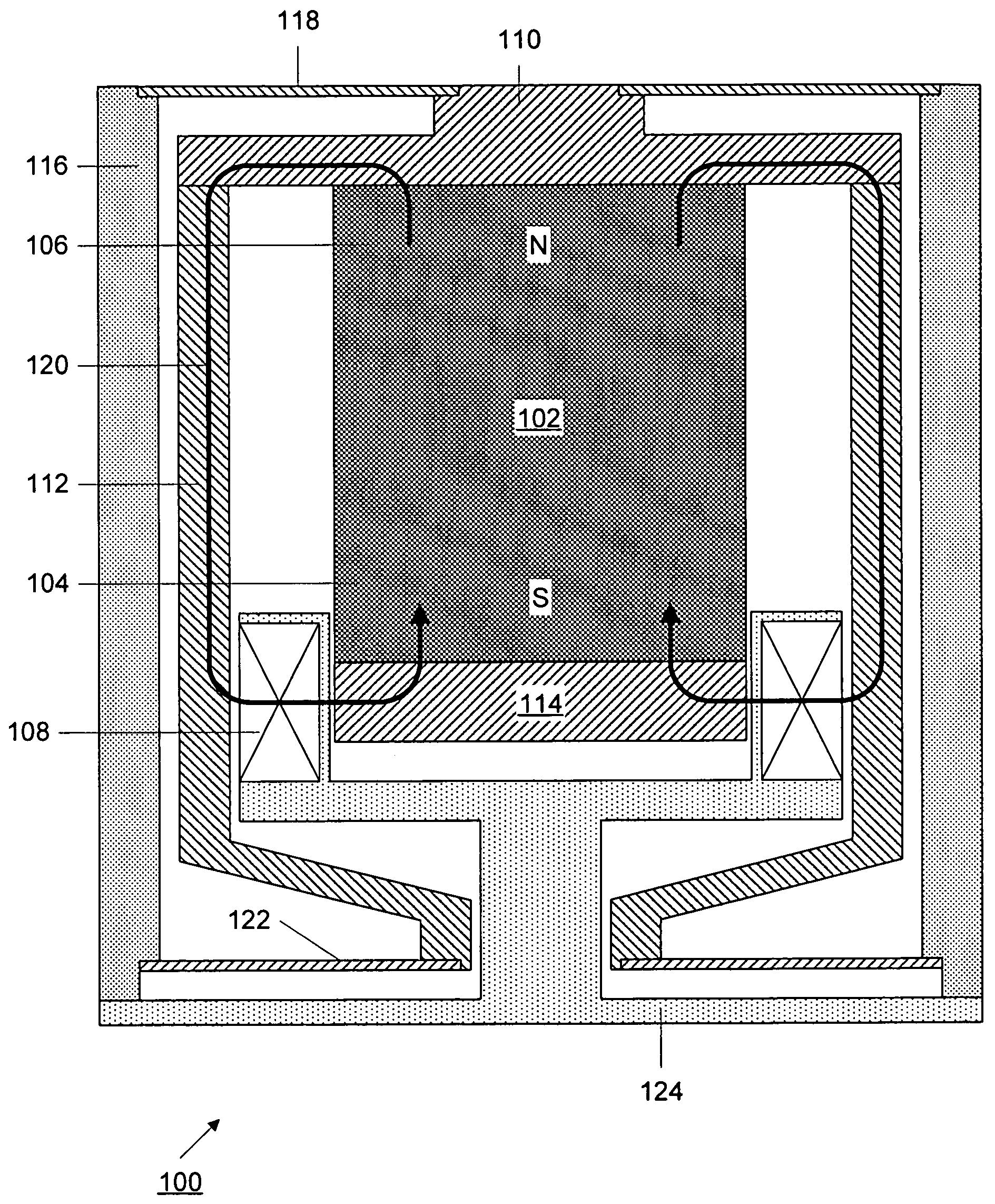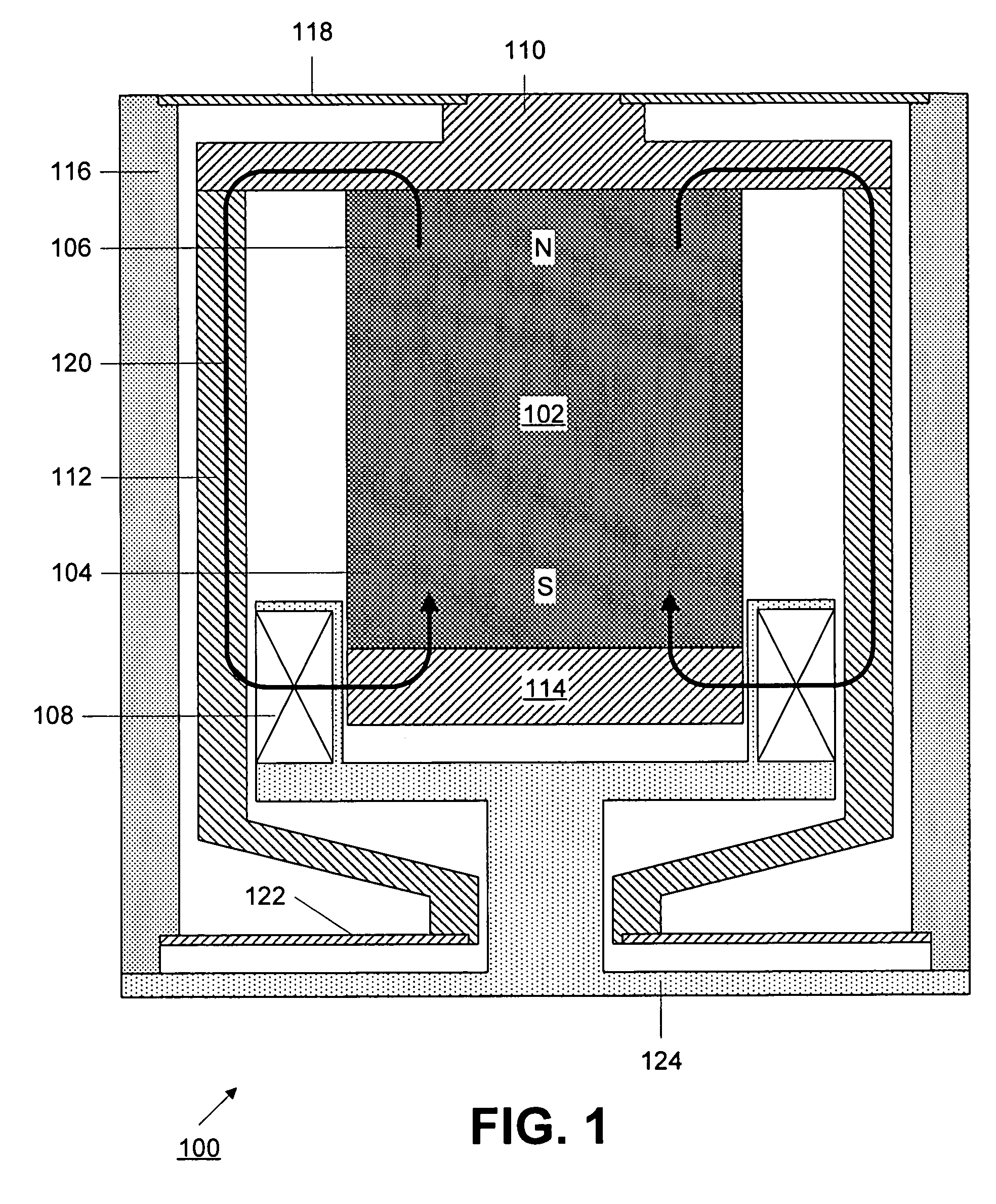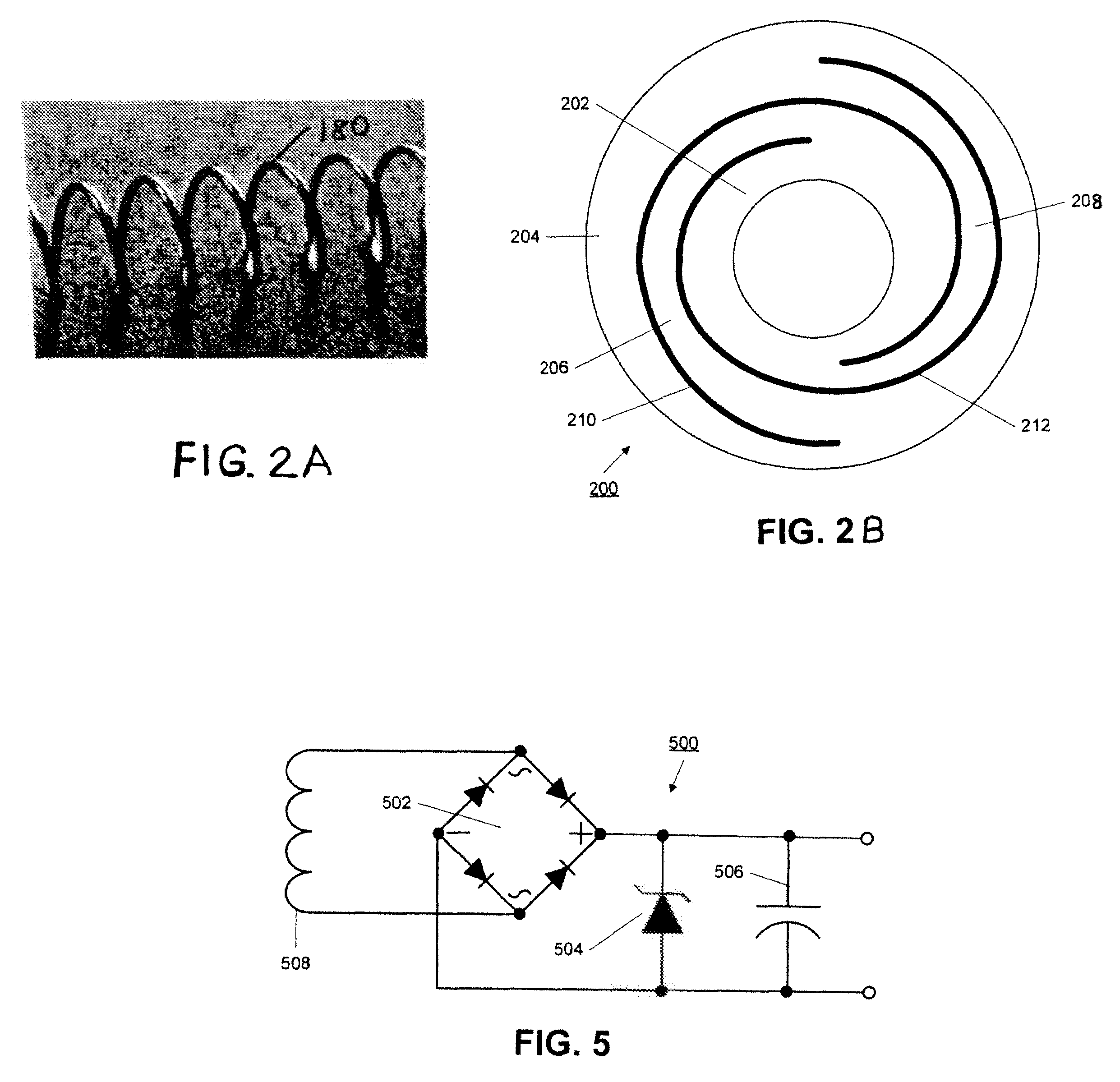High efficiency, inductive vibration energy harvester
a high-efficiency, inductive vibration technology, applied in the direction of dynamo-electric machines, dynamo-electric components, magnetic bodies, etc., can solve the problems of loss of charge, device limitation, change of charge charge on the capacitor, etc., to enhance the magnetic flux emerging from the magnet end, high magnetic permeability material, and high permeability
- Summary
- Abstract
- Description
- Claims
- Application Information
AI Technical Summary
Benefits of technology
Problems solved by technology
Method used
Image
Examples
Embodiment Construction
[0030]It is generally believed that once the mechanical resonance part of an energy harvester has been optimized, it makes little difference which mode of transduction (capacitive, electroactive or magnetic induction is used. (see, for example, “Analysis of a micro electric generator for Microsystems”, C. B. Williams and R. B. Yates, Sensors and Actuators, A52, pp. 8-11, (1996) and “A study of low level vibrations as a power source for wireless sensor nodes”, S. Roundy, P. K. Wright and J. M. Rabaey, Computer Communications, v. 26, n. 11, pp. 1131-1144 (2003)). We have found this not to be the case. We have made several inductive vibration energy harvesters of comparable volumes and improvements in design have led to more than an order of magnitude increase in power output, now at about 9 mW for vibrations at 21 Hz having an acceleration of 0.1 g (1 ms−2).
[0031]FIG. 1 shows a schematic partial cross-sectional diagram of an inductive energy harvester 100 constructed in accordance wit...
PUM
 Login to View More
Login to View More Abstract
Description
Claims
Application Information
 Login to View More
Login to View More - R&D
- Intellectual Property
- Life Sciences
- Materials
- Tech Scout
- Unparalleled Data Quality
- Higher Quality Content
- 60% Fewer Hallucinations
Browse by: Latest US Patents, China's latest patents, Technical Efficacy Thesaurus, Application Domain, Technology Topic, Popular Technical Reports.
© 2025 PatSnap. All rights reserved.Legal|Privacy policy|Modern Slavery Act Transparency Statement|Sitemap|About US| Contact US: help@patsnap.com



